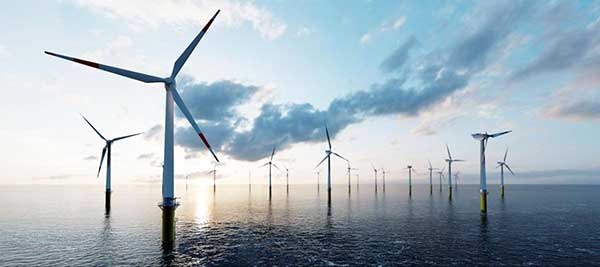Sustainability is one of the buzzwords that has become popular in recent years. But despite how broadly the word seems to be applied — with everything from travel to grocery shopping — there is a great deal of importance that it carries. This is especially true when it comes to sustainable energy.
The biggest contributor to greenhouse gas emissions, and by extension human-induced climate change, is our energy usage. Therefore, it is important to address sustainable energy and look toward how we can make it more widely understood and accepted in society.
This article covers the basics and some of the most frequently asked questions that surround sustainable energy. Below you can find thoughtful and clear responses to what is meant by the term sustainable energy, how we can use it, why we should use it, if it’s possible to achieve — and a host of other important questions.
What Is Meant By Sustainable Energy?
Sustainable energy refers to any form of energy that is both renewable and clean, meaning it is inexhaustible and does not emit carbon dioxide (CO2) or other greenhouse gases (GHGs) into the atmosphere. It is considered sustainable because the nature of this form of energy is not finite; it can regenerate without running out, which is the literal definition of sustainability.
Producing energy without releasing CO2 is also a crucial component of being clean. The term “sustainable” not only applies to sustaining long-term energy use but also to ensuring the needs of the present without compromising the needs of the future. It is clear that excess CO2 emissions will compromise the needs of the future by altering the climate in a negative way.
The most common forms of sustainable energy are renewables, such as solar power or wind farms. But there are several examples that do not fit this exact definition (such as nuclear power, which is not renewable, but it is carbon-free). Energy efficiency also plays a major role in making sure energy systems are as sustainable as they can be.
Why Use Sustainable Energy?
It is incredibly important to use sustainable energy for two main reasons:
- To utilize energy resources that will not run out
- To use energy that will not emit greenhouse gases that further contribute to anthropogenic climate change.
In the past, there were fears that we would run out of oil and grind the modern way of life to a halt. This was known as “peak oil theory,” and it predicted that the world would use up all available oil in the not so distant future. Of course, this has not yet been the case; more reserves were found and better technologies were introduced that liberated fossil fuels from difficult places.
But the sentiment is still applicable: Finite resources cannot be used infinitely. Combine that with the unfortunate fact that the CO2 byproducts from most of our non-renewable resources are adversely affecting the global environment, and there is more reason than ever to move away from traditional energy sources toward sustainable energy in every area of society.
What Are Considered Sustainable Energy Sources?
Sustainable energy sources must be both renewable and clean, which means they are infinitely abundant and do not emit CO2 or other GHGs. There are several sustainable sources that are in use today all over the world. Hydropower is the most used, but the installed capacity of wind and solar grew rapidly through the 2010s as technological improvements drove cost reductions.
How Do We Use Sustainable Energy?
Sustainable energy can largely be used in much the same way that traditional energy is used. Fossil fuels such as coal, oil, and natural gas are typically used to produce electricity, which is then consumed by the public for its everyday energy needs. Sustainable energy is mainly available in the form of electricity without using fossil fuels. In this sense, it is used in the same way as conventional energy — it is just created differently.
But there are ways in which energy from fossil fuels is used differently than electricity sourced from sustainable methods. These mainly apply to internal combustion vehicles and industrial heating applications, both of which utilize combustion of fossil fuels to generate and use energy without first converting it to electricity. However, given the increasing movement toward electrification of vehicles and advances in using catalysts in tandem with hydrogen (or other alternative energy sources), it appears that sustainable energy will become more abundant and more readily available for these processes in the near future.
What Is Sustainable Energy Management?
Sustainable energy management aims to achieve energy conservation, ensuring that everything within a given system only uses as little energy as possible. This requires complex management skills, along with a proper understanding of responsible energy use and sustainable energy sources.
Why Is Sustainable Energy Important?
Sustainable energy is important because it allows us to continue using energy for our modern way of life without negatively impacting the environment. If we continue on our current path with fossil fuel usage, we will run into major problems. First of all, we will eventually run out, no matter how many new reserves were discovered or how much extraction technologies improved. Finite resources are by definition finite, after all.
But we would likely never even make it that far, as exponential growth in CO2 emissions would lead to devastating global warming impacts, effectively forcing us to curtail our familiar way of life by adapting to a drastically changed environment. The type of energy we use has become one of the most — if not the most — important issues of the 21st century.
Why Do We Need Sustainable Energy?
Sustainable energy is the only way that we can continue to live an energy-intensive lifestyle without having to take on the brunt of what climate change will bring. It may be difficult to generate all the energy we require from sustainable sources, but the alternative will be much harder to deal with in the long run.
What Is a Sustainable Energy Supply?
A sustainable energy supply is provided by renewable and carbon-free sources, either held in a form of energy storage or on-demand power generation. Most renewable power sources are intermittent, meaning they only provide energy under favorable conditions specific to their composition — solar energy is only available when the sun shines, wind energy only when the air is moving, and so on. So, a properly sourced supply is essential.
This can be done by ensuring a mix of generation sources are a part of the electric grid, allowing for greater availability for all intermittent power sources to provide to the collective energy distribution system. Sustainable energy can have an inexhaustible supply, but that does not mean the supply will always be available. It requires proper management to ensure a readily available supply of 100% sustainable energy.
How Can We Achieve Sustainable Energy?
Achieving sustainable energy requires a collective commitment and effort from everyone. Some areas are blessed with an abundance of natural resources that are conducive to deploying renewable energy, such as loads of freshwater for hydro or volcanic activity for geothermal power. However, some areas lack resources, with the unluckiest places having little sun, unpredictable wind, no access to water for hydro, or no geothermal potential.
To truly attain sustainable energy on the scale that is needed, jurisdictions with renewable and clean energy surpluses will need to share with areas that are not able to meet their energy needs without fossil fuels or other unsustainable sources. This can be extremely difficult given the political implications and general difficulties with redistributing any valuable resources, but it is needed if we are to move as a global society toward more sustainable energy usage.
One way we can work toward this as we enter the clean energy transition is to utilize renewable energy in one area to offset or lower carbon emissions in another. Terrapass offers Renewable Energy Credits (RECs) that can be used as carbon offsets to lower your carbon footprint. This is very useful if you live in an area, for example, that does not provide clean energy options to your home or if you are unable to afford an electric vehicle.
Is Sustainable Energy Possible?
Yes, sustainable energy is possible — as long as we can work together to implement its generation. We also need to continue to make progress in improving access to it and creating new, more sustainable sources of energy that can be used on a large scale. We have already seen a massive drop in the price of renewable energy, from more than 10 times the price of traditional energy to now being cheaper than natural gas or coal generation in many places around the world.
Electric vehicles are becoming more abundant, opening the figurative door for electricity generated from renewables to replace gasoline for everyday transportation needs. And with advances in hydrogen fuel cell technology, green hydrogen potential, renewable methanol fuel, and other renewable energy sources that are becoming available in the real world, it seems more likely than ever that we might just be able to meet our growing energy needs from sustainable sources.
What Are Some Examples of Sustainable Energy?
The most typical examples of sustainable energy sources are renewables, such as solar energy, wind power, hydroelectric power, biofuels (or biomass for bioenergy), and geothermal energy. Most electric companies offer wind or hydro as part of their regular energy packages, depending on what is available in their region. Solar is being utilized more effectively at the individual level (such as putting photovoltaic solar panels on home rooftops), and geothermal is only a major source of energy in places like Iceland that have an abundance of natural energy available.
Nuclear power is a type of energy that does not really fit easily into a category. It is nonrenewable, but given the relatively miniscule amount of fuel needed to run nuclear power plants, it is virtually inexhaustible — and it is carbon-free. People are split on this issue, often strongly, with some claiming nuclear power is a sustainable energy source that will help us reach our carbon reduction goals, while others vehemently oppose this stance.
Which Energy Source Is the Most Sustainable?
There is no one energy source that is a clear-cut winner as the most sustainable one — as long as they are regenerative and do not emit GHGs, they are just as sustainable as the others. However, depending on where you are needing your energy, there are some choices that are better than others. This largely depends on geographical location and which natural resources are available to harness energy from. Solar may be better in Arizona, while hydropower may be better in Washington.
The American Southwest desert has a lot of sun with little available water, and the Pacific Northwest has an abundance of water with constant rain clouds that block the sun, making it imperative to select the right type of energy source for each region. This is the only way that certain sources are more sustainable than others.
Make sure you use the type of energy that nature dictates, otherwise you could end up facing unnecessary problems that could easily be avoided with knowing which sustainable source to choose.
Brought to you by terrapass.com
Featured image:











